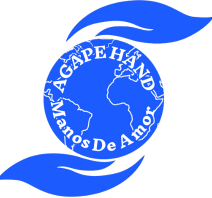They were always here, the original inhabitants, the custodians of our planet, they have lived on their ancestral lands in harmony, with nature for centuries. Their cultures are rich and diverse, they speak the majority of the world’s languages. Yes, they are the guardians of some of the Earth’s most precious resources and some of the most desired ones. The world’s 370 million indigenous people are among the most vulnerable and disadvantaged populations in the world. They are facing increasing pressures to exploit their ancestral lands and now it’s time for us to protect these indigenous communities.
WHY? Because in the past, we were the ones who disenfranchised, dislocated, and even forced these indigenous people into servitude. They’ve had their children stolen, and their wages stolen. They have even been punished for practicing their own culture and speaking their own language.
While in reality, they are the inhabitants, this is their country for 50,000 years and yet today they have no right to own land in their own community. And the sad reality is that the government has also been the perpetrator or complicit in many of these initiatives.
In order to help these people, we have to work alongside the community, empowering and working with everyday leaders to help them shape and determine and create their own bright future. Together, we have to look at what they want and equally importantly, what they don’t want.
WHAT THEY ACTUALLY WANT
• Parents and carers involved in their children’s education from birth.
• They want to learn together and give their children the best start to life.
• They want a curriculum that focused on culture, independence, and life skills.
• And most importantly, they want local jobs and training.
We know that it’s a challenge, a really big challenge, to make it happen. Getting funding for something new, innovative, and out of the box has never been easy.
But the idea that we could sit in our air conditions, city offices, and develop plans to address the issues in a remote indigenous community, is crazy. The idea that local leaders didn’t know or care about the challenges facing their community, is arrogant. Instead, we should address the challenges of these remote indigenous communities with long-term, sincere authentic engagement and work closely with the local community. Because despite generations of adversity and their current unbelievable hardship, we could see determination, strength, and pride in them. DETERMINATION to secure a better future for their coming generations, STRENGTH to carry on despite so many young deaths, and PRIDE in themselves and their culture.
And the good news is that there is a solution. We’ve to build authentic relationships, have trust in the knowledge and wisdom of the local community, and empower them as everyday leaders to shape and determine their own bright future. The challenge for us is whether we can make that change.
As Indigenous people always say, “We are not the problem, we want to be the part of the solution. We’re not against development, we want to be part of the development, but development on our terms.”
By protecting the rights of its custodians, we protect the future of our planet.



